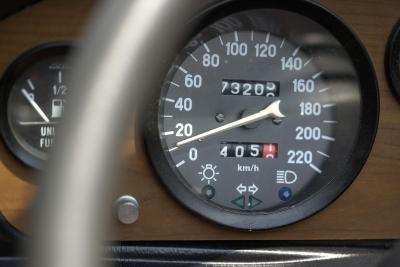
Speedometers have a margin of error. Different types of speedometers are used in the automotive industry, and although the exact margin of error varies by type and manufacturer no option provides a 100 percent accurate speed reading at all times. Variables on the vehicle that change over time affect the accuracy of a speedometer.
"Car and Driver" magazine in 2002 did a study on the accuracy of speedometers. The results showed that, on average, there was a noticeable discrepancy between the speed displayed in the vehicle and its actual speed. After studying 200 vehicles moving at 70 mph, the speedometer readings on average were 1.37 mph faster than the actual speed. Some vehicles were off by an even larger margin.
Today, many people realize there might be a problem with their speedometer's accuracy because so many vehicles are equipped with a GPS system that also measures speed. When you notice a difference between the speed provided by the GPS and the speedometer, use the GPS as the more accurate measure. Richard Langley, a professor of Geodesy and Precision Navigation, states that GPS speed readings are generally much more accurate than speedometers.
Many things cause the speedometer reading to be off. For example, tires of a different size or with different air pressure than what was on the vehicle when the speedometer was originally calibrated contribute to inaccurate readings. In addition, GPS-based speedometers are inaccurate if you can't get a clear signal from the GPS satellites, such as when the vehicle is surrounding by tall objects.
A speedometer that is not accurate should be re-calibrated. This process typically should be done by a qualified mechanic. A mechanical speedometer is re-calibrated by using gears with different numbers of teeth to get a more accurate reading. In modern speedometers controlled by electronic sensors, re-calibration involves accessing the vehicle's computer programming that controls the speedometer readouts.
Speedometers are supposed to fit within a designated margin of error to meet U.S. transportation regulations. According to the law, when a vehicle is traveling at a speed of 50 mph, the speedometer may not be off by more than 5 mph in either direction.